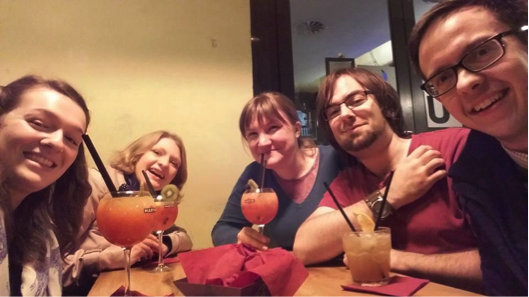Buongiorno! We recently enjoyed a fantastic study trip to Rome with the South and East Museums Federation. Visiting a range of museums with talks and tours we enjoyed getting to know more about the organisation of Italian museums and how they compare to our own places of work. With time to explore what else the eternal city has to offer we tasted good food, saw amazing sites and got to know other members of the Federation.
Four of us who were new to the annual Study Trip have written up some of our impressions to give you a flavour…
English Language in Italian Museums
Lauren Ephithite
Hello, my name is Lauren and I am Curatorial Assistant at Gressenhall Farm and Work House in Norfolk. My first South and East Museums Federation Study Trip to Rome was really interesting and enjoyable. It was great to meet people working in Italian museums through the organised visits as well as visiting other museums, heritage sites like the Colosseum and ‘networking’ with my fellow SEMF members over a glass of wine! It has made me consider many aspects of museums and was particularly struck by the provision of English text.
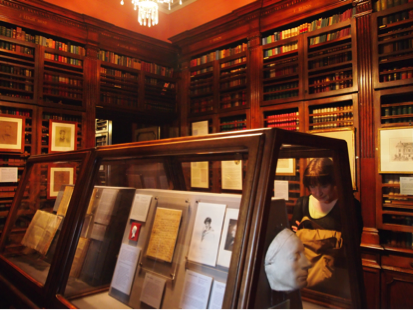
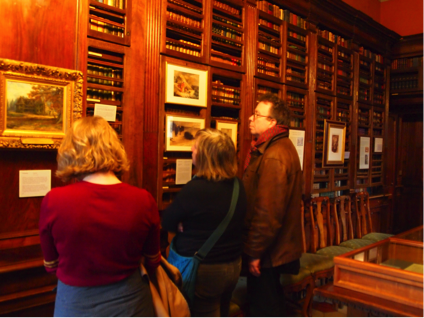
It was intriguing to visit the Keats-Shelley Memorial House. Most of their visitors are English therefore all panels and object labels are in English. They have Italian translations available in a folder but it was a surprise that the display text was not in the national language. We learnt that Italian schoolchildren often have school trips here. These trips are in English so that they can practice their English language skills.
At the Musei Capitolini I very much enjoyed meeting Sergio Guarino, Curator of Paintings. He was very proud that in 1993 he was one of the first people to put English as well as Italian on object labels in the galleries!
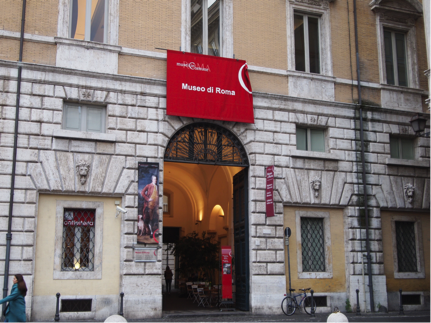
In my Lonely Planet Italy guidebook (8th edition, Feb 2008) the Museo di Roma was described as ‘moderately interesting’. Instead of putting me off, this description made me want to visit the museum to see what I thought! This museum is the closest thing to a Social History museum that Rome seems to have. It looked at the history of Rome for example by looking at tourism and influential families through displays of paintings, furniture and sculpture.
There was some provision for non-Italian speakers through an English translation on laminated sheets. However these were not always accurate and could have been a bit more engaging. Every visitor I saw was reading the English translation. Come on Museo di Roma — join the other museums in Rome and provide better interpretation for non-Italian speaking visitors. Perhaps then you might be reviewed as better than ‘moderately interesting’?
Returning home this trip has made me consider how accessible our museums are to tourists or to people for non-English speakers. In our multicultural country should we be making more effort to provided translated text? How should this be provided? Through multi-language object labels, sheets or folders in galleries, available as a leaflet or digitally?
Santa Maria del Popolo Church
Joe Sutch
Hello, my name is Joe and as a member of the South and East Museums Federation committee I helped to organise the Rome study trip.
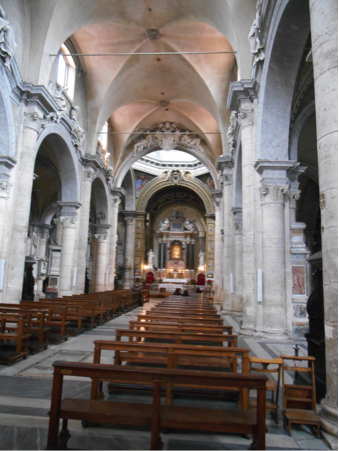
On the morning of Friday 29th January, some of the party went to the church of Santa Maria del Popolo, a relatively simple Baroque church. There were striking tombstones and several side altars, one, called the Chigi Chapel, was decorated by Raphael, which had an archway copied from the Pantheon. There was also one with the painting of the Crucifixion of Peter by Caravaggio in the side chapel next to the altar. The latter also painted the Conversion of Saul which was also hanging in the church.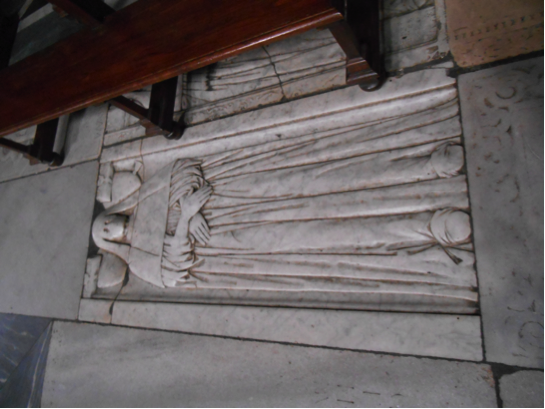
The Cybo Chapel had the tomb of the man who gave his name to it, as well as paintings of the martyrdom of Saints Catherine and Lawrence and the Immaculate Conception. It was renovated by Pinturecchio from 1680 to 1687. Adjacent was the Basso della Rovere Chapel, dedicated to Saint Augustine. This had paintings of the birth as well as the Assumption of the Virgin. Next was the Costa Chapel, which had the tombstones of Costa, Mermini and Bracharin.
St Thomas of Villanova was on the altar as well as the Holy Spirit and the |Four Evangelists. The Cerasi Chapel had frescoes by Ricci and Tacconi. The Chapel of the Most Holy Crucifix was decorated by the Cybo family. The Mellini Chapel was commissioned under the patronage of the man who gave his name to it, which also contains his monument.
Learning in Rome’s Museums
Tabitha Runacres
Hello, my name is Tabitha and I work as the Learning and Outreach Coordinator at the Long Shop Museum in Leiston. From arriving in a sun-drenched Ciampino airport, I knew this trip would be a good one, and I was right. With a fantastic range of museums and galleries (as well as eateries) on the agenda, I was looking forward to getting started.
As a museum educator I was intrigued to see if the museums and galleries in Rome had a similar aim of learning, and a family friendly focus as we do in Great Britain. I know I have the Kids in Museums manifesto plastered around me as I’m sure many others do!
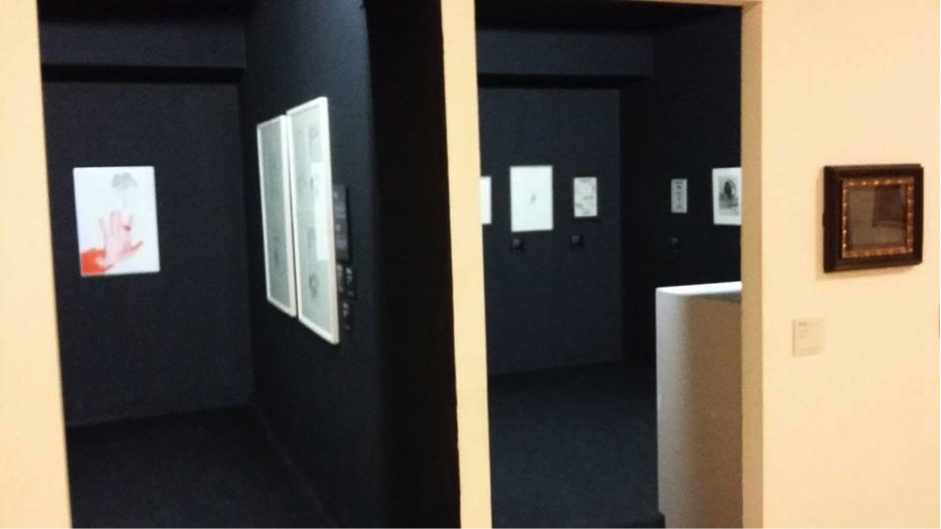
A gallery of particular interest was the Galleria Nazionale d’Arte Moderna (National Gallery of Modern Art) where, after rushing over from another museum, we received a whip-around tour from the Director of Education. This included a special look around their purpose built education room, or Laboratory as it was called, which was a multi-functional space under the galleries to be used by schools in workshops, families on special Sunday activities and adult groups, such as their current successful project with Alzheimer’s sufferers. One area which stood out was the ‘wash room’ space, for particularly messy activities and participants! These practical spaces (which I’m sure most museums would be jealous of) as well as the scope they provided, demonstrated that there is a strong ethos of learning and fun throughout the Gallery.
While having limited resources to dedicate to education programmes, the Gallery is able to hire freelancers to carry out the workshops for families, as well as working with artists that at currently exhibiting. The Director said that most are very willing to work in collaboration with the Gallery to develop and deliver sessions around their work, a possibility that I shall be taking away with me. As well as family Sundays throughout the year, a previous project had resulted in a trail now available, that includes drawings of artworks within the gallery by children, and can be used around the various galleries and cut into a handy pocket sized book. It really was lovely to see the same passion for learning that came across from our hosts, as well as their understanding of barriers to museum learning, such as school travel costs, which resonate I’m sure.
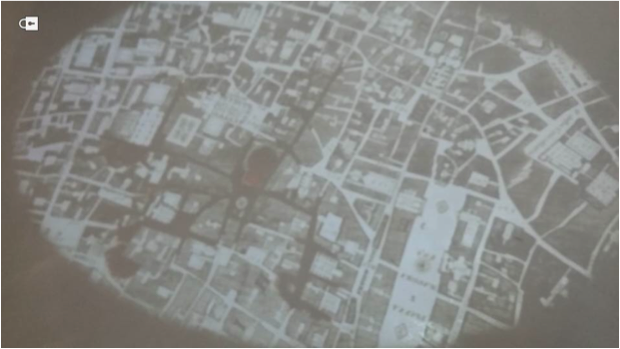
While visiting other museums, learning was not the focus of our tours, but could still be found. While wandering the MAXXI gallery, I noticed an area with dramatic cone shaped pods placed near the café on the ground floor. Perhaps it is my naivety, but I did presume that these pods were another modern art piece spilling from the nearby gallery. The MAXXI online does promote an ‘’interactive and inclusive’’ approach, with sessions for schools, adults, and infants – you can even hold your birthday there. This was encouraging to see on their website, however was not obvious when visiting, which is interesting as museums in the UK are constantly trying to let visitors know what we offer when it comes to learning.
Overall, with the range of museums and galleries that we managed to fit into only a few days, I was interested to see the diversity in one city, as well as the difference in offers when it came to learning. I have definitely taken away some ideas and thoughts to bring to my own museum in the future (including a ‘beating heart of Rome’ projection on the floor of the MAXXI – definitely want one demonstrating my museum!). Thank you again to Will and Joe for organising the trip, and bring on the next one!
What I took away from the trip (and what I tasted!)
Emily Shepperson
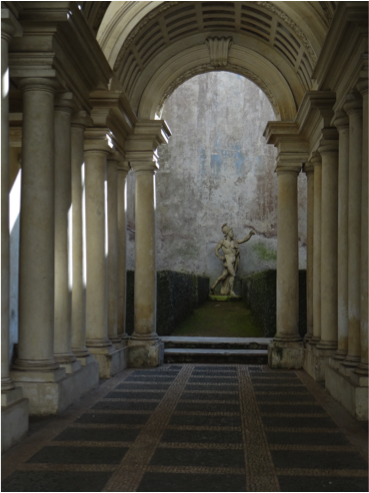
My name is Emily am the Assistant Curator at the British Schools Museum, in Hitchin. Out of the fascinating range of museums we visited I took away two main thoughts for my work back home
Tabitha and myself took a detour to visit the Galleria Spada in Palazzo Spada near the Tiber River. Set in a palace building the gallery is very small but welcoming. The main attraction was a sculpted colonnade, which uses forced perspective to appear much longer than it is. The statue at the end of the corridor is only actually three feet tall.
The gallery has a varied collection of paintings and artworks but was significantly quieter than the larger museums in Rome, and unknown to many tourists. Working in a small independent museum I was struck by the importance of marketing to help lesser-known museums build visitor numbers. Perhaps the Galleria Spada could work with other smaller sites across Rome to develop a visitor pass for unusual, or unsung museums?
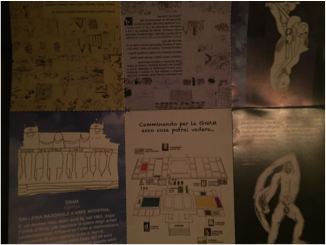
I am interested in how family trails are used in museums and enjoyed hearing about the children’s guide book at the National Gallery of Modern Art. Education staff explained how the guide had been producing using drawings young people had produced in response to key works. I thought the guide was a great, relaxed way for families to structure their visit to a large museum.
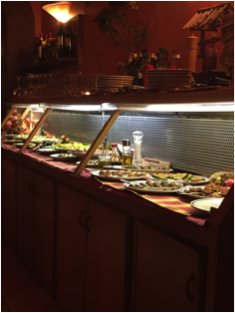 A
A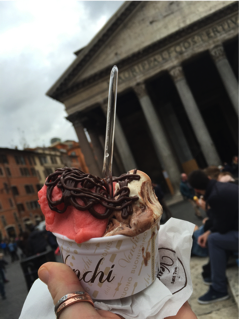 s well as visiting interesting places and hearing from specialist speakers the study trip was a great way to explore the culture of Rome with like-minded people. Tabitha and I sampled the best Pizza Bianca in Rome (a fresh chewy bread topped with oil, salt and rosemary) in Campo de Fiori, it didn’t even last long enough for a photo! There was also plenty of time for gelato whilst wandering the picturesque streets of Rome.
s well as visiting interesting places and hearing from specialist speakers the study trip was a great way to explore the culture of Rome with like-minded people. Tabitha and I sampled the best Pizza Bianca in Rome (a fresh chewy bread topped with oil, salt and rosemary) in Campo de Fiori, it didn’t even last long enough for a photo! There was also plenty of time for gelato whilst wandering the picturesque streets of Rome.
We enjoyed some sociable meals together as a group. My favourite was our last night at local restaurant Hostaria Al Boschetto, I enjoyed some traditional antipasto followed by fresh pasta. We washed our meal down with delicious cocktails from a local bar, and enjoyed some lively discussion about the different museums we all work in.
We are all very grateful to have received the Federation’s Martin Howe Travel bursary, which enabled us to enjoy this excellent study trip. It was been a wonderful opportunity to get to know other members of the federation and we are already looking forward to where 2017 will take us!
